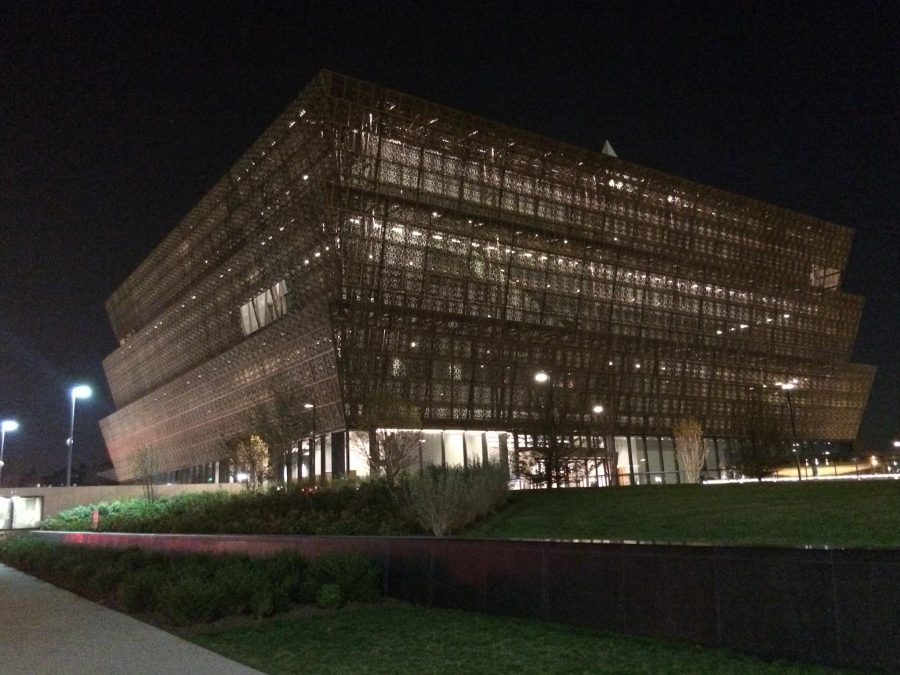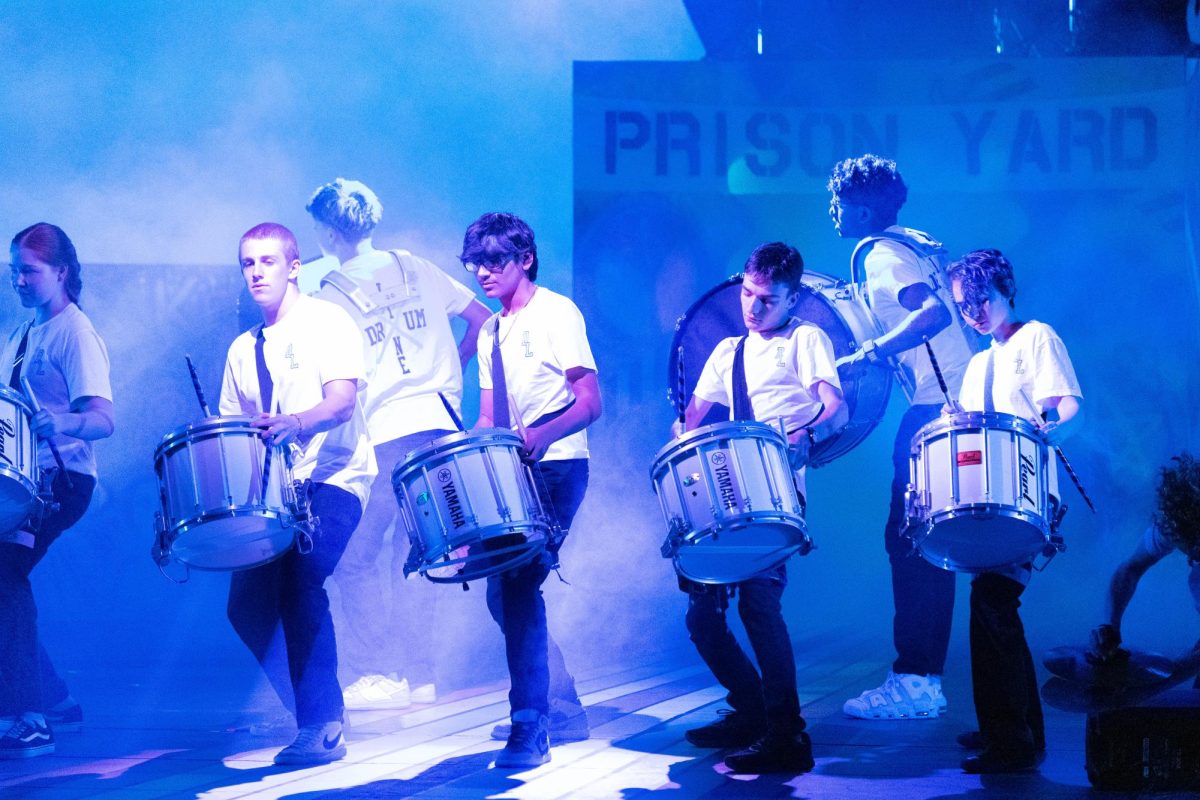New museum showcases African American history
The exterior of the Museum is designed to represent the ironwork crafted by enslaved African Americans in the south. Photo by Natalia Beltran.
November 14, 2016
Michael Jackson’s fedora, a shard of glass from the Birmingham church bombing, a slave’s shackles and an auction block. These objects share a unifying connection: they’re all featured at the National Museum of African American History and Culture (NMAAHC).
The NMAAHC, the most recent addition to the Smithsonian Institution, opened Sept. 24 on the National Mall in an effort to bring prominent pieces of African American culture to the public eye.
All of the museum’s features are designed to highlight the achievements of African Americans throughout history.
“The exhibits are a tribute to the African American experience of the U.S., from slavery on up,” an anonymous NMAAHC security guard said.
The museum is laid out to move chronologically from bottom to top: the first floor is devoted to slavery; the second focuses on segregation and the Civil Rights movement; and the top floors are dedicated to the achievements of African Americans in areas such as sports, entertainment, fashion and politics.
“The sheer magnitude of history covered, including artifacts and videos, makes it so powerful,” museum visitor Kristen Broady said. “You find African American history sprinkled into other museums, but it’s nothing like this.”
Because there are no other national museums devoted to African American history, the museum strives to educate visitors about a culture they may not know much about.
“Although African Americans are an integral part of American culture, this is the first time there’s been a collection specifically devoted to Black history all in one place,” Broady said.
Beyond educating visitors on African American history and culture, the museum encourages a deeper understanding of the racism the U.S. was founded upon and that still exists.
“There was a lot of information explaining things and it went a lot more in depth than anything I knew about African American history from classes,” senior Jonah Eisenberg said.
Artifacts include a whip used to beat slaves, Jackie Robinson’s baseball bat and protest signs from the Black Lives Matter movement, offering visitors a glimpse into the racism that African Americans faced in the past and continue to face in the present.
A segregated railroad car, the dress Rosa Parks wore the day of her arrest and a wall with the names of over 2,200 lynching victims are among some of the most significant displays. The casket of Emmett Till, a black teenager who was shot and killed in Mississippi in 1955 for flirting with a white woman, is widely cited as the most powerful feature.
The museum also offers interactive exhibits such as a room that allows African Americans to trace their family history and a video tutorial on traditional African dance.
Despite the many serious exhibits, the museum offers a positive and hopeful message by also focusing on the achievements of African Americans.
“It really allowed people to open their eyes and find out how the country was built from slavery and oppression,” museum visitor Sterling Gaines said. “However, it also featured a lot of figures from my youth that helped show me that if you set your goals high, you can accomplish anything.”








